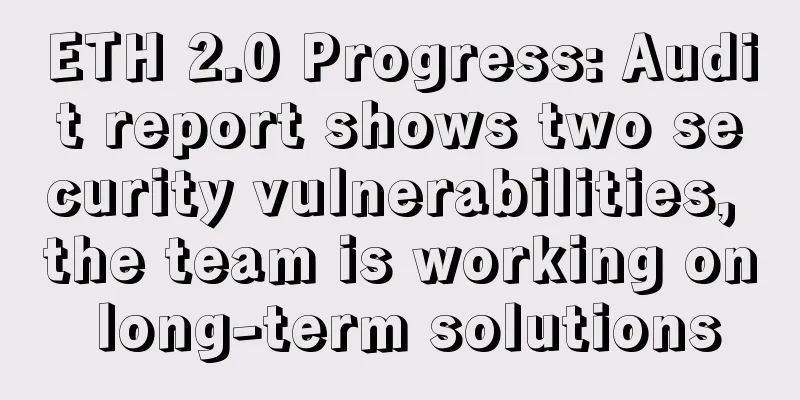If Ethereum forks, will NFT also "fork"?

|
The process of Ethereum PoS to PoW will affect the interests of miners. As the merger date is approaching, many topics about forks have emerged in the community. One topic has attracted the attention of Odaily Planet Daily, that is: Ethereum forks may lead to reentry attacks, putting users at risk of losing NFTs . The user in the picture above pointed out that if the user does nothing, his NFT may be lost due to a replay attack. In response to this, different opinions also appeared in the comment area, such as that if the user does nothing, he can protect his assets. Which of the two views is right or wrong? If a fork occurs, will the user's NFT be at risk? How should one protect his assets? Odaily Planet Daily will answer the above questions by analyzing the causes. Reentrancy attacks and EIP-155Let us first review two knowledge points, one is the reentry attack and the other is EIP-155. In blockchain, a reentry attack specifically refers to a situation in which, during a network hard fork, a transaction signed by a user on the original chain can be copied by the user or others without permission on other forked chains to obtain more assets. For example, Xiao Ming has several CryptoPunks on a PoW chain. After the PoW chain forks into a PoS chain, Xiao Ming will have the same number of CryptoPunks on both chains. At this time, Xiao Ming signed a transaction on the PoW chain to sell several CryptoPunks. In theory, this transaction can be copied again on the B chain without Xiao Ming's permission. If Xiao Ming copied this transaction himself, Xiao Ming would get an extra profit from selling NFTs (which also cheated the buyer by "adding more" in disguise); if the transaction was copied by others, Xiao Ming would lose his assets on the PoS chain in vain. EIP-155 is a protocol used to prevent reentrancy attacks. Simply put, if different forked networks and test networks follow the protocol consensus and set a unique [CHAIN_ID] for themselves, reentrancy attacks can be avoided. Who protects users? How can users protect themselves?After understanding the principles of reentrancy attacks and EIP-155, we have made it clear what we should do if a fork occurs after the Ethereum merger. First of all, we need to collect some information: does Ethereum's forked chain follow the EIP-155 protocol? If the forked chain follows the EIP-155 protocol (depending on the changes to the code made by the fork leader), then the user's transactions on different blockchains are not replicable and the user does not need to do anything . If the forked chain does not follow the EIP-155 protocol (not very particular), then reentrancy attacks are feasible, and any transaction signed by the user may be copied on other forked chains. If you want to maximize your benefits, you should copy each transaction on other chains (preferably through automated contracts); if you choose to embrace (genuine) Ethereum, do not sign any transactions on forked chains. |
Recommend
What kind of people are likely to create miracles?
1. Thick and thick eyebrows People with sparse ey...
Is it good for a man to have thin lips? Analysis of the face reading of men with thin lips
You can tell a man’s character by looking at his ...
Litecoin block reward halving countdown begins! Some mining companies can finally breathe a sigh of relief
Author | Hu Chen, please indicate the source for ...
What is the personality of a person with the Sichuan character palm?
In palmistry, we can see a person's personali...
The most powerful woman in business
In life, each of us has our own facial features, ...
Anhui "draws the sword" against online pyramid schemes such as "financial mutual assistance" and "virtual currency"
Xinhua News Agency, Hefei, July 19 (Reporter Chen...
What does an extremely selfish and narcissistic person look like?
After experiencing the wave of the one-child poli...
Bitcoin Taproot upgrade has received 53.71% hashrate support, will activation be on schedule?
What is Taproot? It is a proposed protocol upgrad...
What kind of face makes women promiscuous and prone to cheating
I believe that many people would think that women...
Judging from a woman's palmistry whether she is a lucky charm for her husband
When it comes to women who can bring good luck to...
Do people with big nostrils have good luck in love?
In physiognomy, the human nose occupies a very hi...
Dutch city trials blockchain for real estate contracts
Rage Review : The Dutch city of Rotterdam is work...
See how Ahnheng Xuanwu Shield solves information security issues in blockchain games
Recently, Octopus Entertainment's leader meet...
What does it mean if a girl has a mole on her ankle?
It is actually very normal to have moles anywhere...
PANDA MINER The world's first GPU-integrated mining machine
PANDA MINER The world's first graphics card i...









